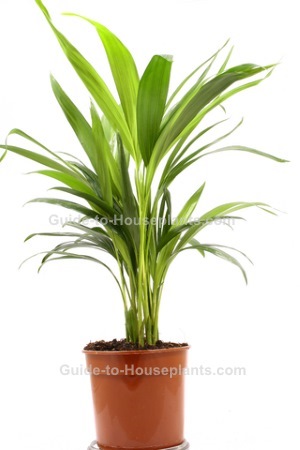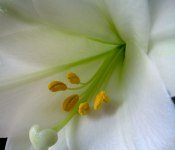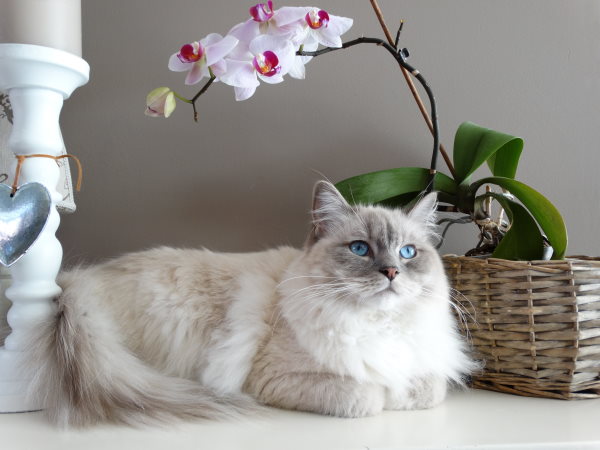Cast Iron Plant Care
As its common name suggests, cast iron plant is tough. It will survive low light, infrequent watering, and extreme heat that would be deadly to most plants.
In fact, it practically thrives on neglect. Don't overwater -- it doesn't like soggy soil. And don't repot it very often -- it doesn't like to be disturbed. Respect its Greta Garbo attitude and it will do just fine.

Get to Know Your Cast Iron Plant
Known botanically as Aspidistra elatior, this low-maintenance houseplant is native to China.
Cast iron plant grows slowly, eventually reaching a height of up to 3 feet (90 cm). It grows in a clump of 6-inch (15 cm) stems with glossy, dark-green leaves growing 24 inches (60 cm) long and 4 inches (10 cm) wide. You can keep those shiny leaves dust-free by wiping them with a damp cloth. It won't really mind the dust, but you might.
Many named varieties are available. 'Starry Night' has leaves speckled with yellow, 'Milky Way' is speckled with white, and 'Variegata' has creamy stripes down the leaves.
Will it bloom? Maybe. Small, unattractive, purplish-brown flowers may appear at the plant's base in early spring. But don't expect them. Flowers don't appear often, and they're hardly noticeable.
Is cast iron plant poisonous to cats and dogs? No, ASPCA reports that it's non-toxic.
Cast Iron Plant Problems, Answers and Solutions
Split and damaged leaves may be caused by too much fertilizer. If leaves are starting to split, skip feeding for a month, then resume feeding with a diluted amount. You can cut off badly damaged leaves at the soil level. It's also a good idea to flush the soluble salts that build up in the soil from fertilizers. Fortunately, getting rid of excess salts is easy. Here's how:
How to Flush Salts
Place your plant in a sink or take it outdoors on a warm day. Slowly pour tepid water over the potting mix. Allow water to drain out the drainage holes. Repeat a couple times, then empty the drainage tray. Flushing salts a couple times a year will make your Aspidistra healthier and takes only minutes to do.
Something bugging your houseplant? Watch for spider mites that may invade this plant. They're attracted to indoor plants, especially during the winter months when the indoor air is dry. Spider mites are so tiny, you can hardly see them. You'll first notice their faint webbing between leaves. Isolate any infested houseplant to prevent pests from moving on to your other houseplants, and treat any infestation immediately.
Yellow leaves are a symptom of overwatering. Remember to use a pot with a drainage hole to prevent soggy potting medium.
Wondering when to repot? Aspidistra elatior can be moved up to a pot 1- to 2-inches larger as it grows, until a 12-inch (30 cm) pot is reached. Older plants prefer to stay in the same pot. Want to cover up a plain pot? Slip it into a cachepot -- a decorative pot without drainage holes. I put small rocks in the bottom of cachepots to keep the inner pot above the drainage water.
Cast iron plant is evergreen and makes a beautiful, easy-care house plant year-round. Best of all, you'll enjoy it for many years.
Cast Iron Plant Care Tips
Light: Low to moderate light are best for this houseplant. Keep it out of direct sunlight because it can cause brown scorched marks on leaves.
Water: In spring and summer, water thoroughly, but allow soil to dry out before watering again. Water less in fall and winter when growth is slower. It's a good idea to use a pot with drainage holes to prevent soggy soil, which can lead to root rot. Yellow leaves are often a sign of overwatering.
Humidity: Average indoor (around 40% relative humidity). It will tolerate dry air, but keep plant out of drafts and away from heat/AC vents.
Temperature: Adaptable to changing temperatures 50-85°F/10-29°C
Soil: Any all-purpose houseplant potting mix
Fertilizer: Feed monthly spring and summer with a balanced liquid fertilizer diluted by half. Do not feed at all in fall and winter, as cast iron plants grow very little during this time.
Propagation: Divide in spring only when it gets overcrowded in its pot. A slow-grower, cast iron plant probably won't need divided more often than every 5 years. It's best to remove new shoots (with roots attached) and pot them separately than to repot an old plant.


